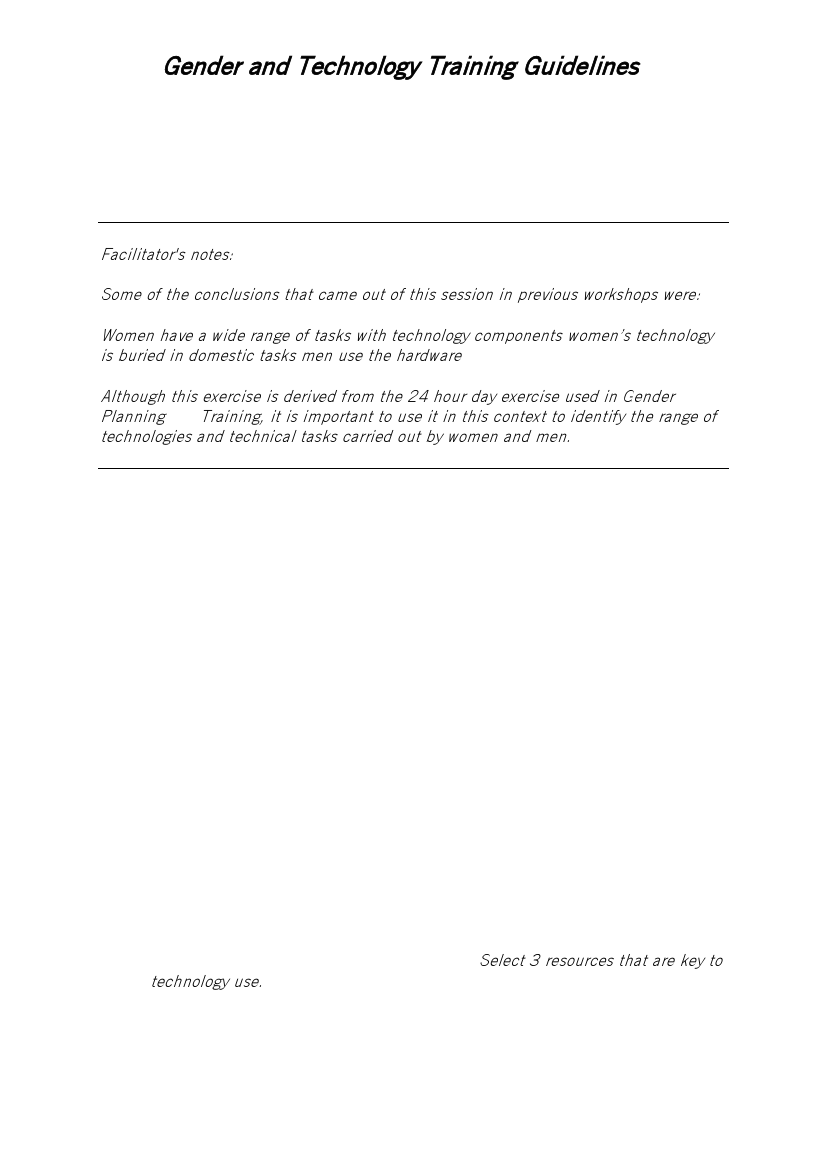
Step 6
Gender and Technology Training Guidelines
Which of the men’s tasks would involve the use of technology?
Discuss. What have the participants learned about women’s and men’s
use of technology?
Facilitator's notes:
Some of the conclusions that came out of this session in previous workshops were:
Women have a wide range of tasks with technology components women’s technology
is buried in domestic tasks men use the hardware
Although this exercise is derived from the 24 hour day exercise used in Gender
Planning Training, it is important to use it in this context to identify the range of
technologies and technical tasks carried out by women and men.
SESSION 10
ACCESS AND CONTROL OVER RESOURCES
PURPOSE
To identify the differences between men and women in their access and
control
over resources and the implications of this difference for
technology development.
TIME
1½ hours
MATERIAL Flip chart paper, crayons
ACTIVITY
Step 1
Brainstorm resources ( e.g. land, water, fodder, fuel, animals, trees,
machinery, electricity, tools, transport, advice and information, credit,
training, education, literacy) needed to carry out specific daily tasks such as
collecting water, making a garment, reading the newspaper, farming etc.
Step 2
Divide the participants into three or four groups. Ask the groups to take a
community that they are familiar with and to identify what resources women
and men have access to in their daily lives. Select 3 resources that are key to
technology use. Ask participants to discuss who has control over these
resources in that context. Is it the women? is it the men? The group should
summarise their discussion on flip charts.
Step 3Reassemble in the large group and present each group's findings.
26